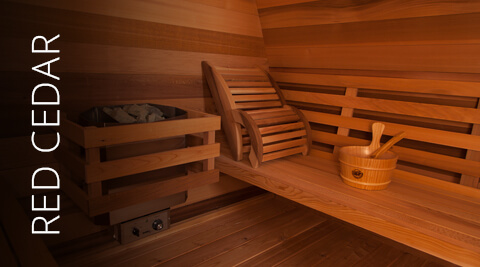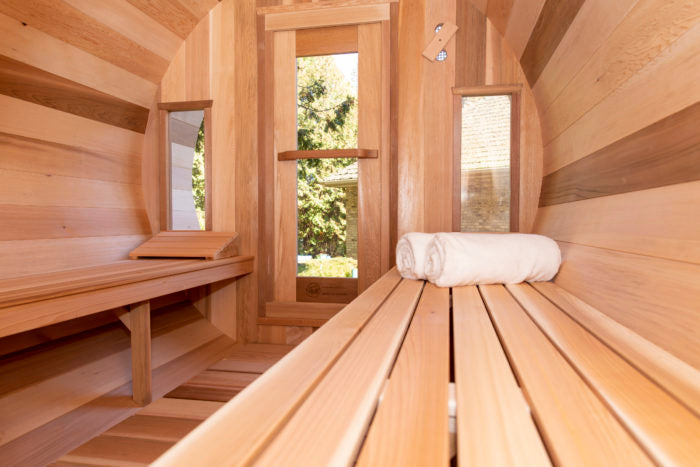Everything about Traditional Sauna
Everything about Traditional Sauna
Blog Article
Excitement About Traditional Sauna
Table of ContentsA Biased View of Traditional SaunaThe smart Trick of Traditional Sauna That Nobody is Talking AboutThe 20-Second Trick For Traditional SaunaTraditional Sauna Things To Know Before You BuyTraditional Sauna Fundamentals Explained
Most of the weight lost in a sauna is water loss and is re-gained upon rehydrating. However, undeniably sauna can be a vital part of a healthy and balanced fat burning program. To take a look at the differences between traditional and IR saunas, I will divide these into proven, theoretical, and fabricated distinctions.Thus, the best factor in the saunawhich goes to the ceiling directly above the sauna heateris usually between 185 and 190 F. Claims that a typical sauna goes beyond 200 F is merely not real and not applicable for electric saunas sold in the United States. The temperature for a far-infrared sauna is usually set between 120 and 140 F; nevertheless, unlike the typical sauna, the goal in and IR area is not to accomplish a heat.

When a typical sauna has been effectively heated, the sauna wall surfaces are cozy, the air temperature has attained set temperature and the rocks are extremely warmed. As an interesting side note, the warmed walls and the rocks are discharging far-infrared heat, incorporated with the warmed air, to produce an "wrapping up warmth".
The Greatest Guide To Traditional Sauna
When the heat is achieved, the components cycle on and off to preserve the heat. Most traditional sauna customers appreciate pouring water over the rocks to develop steam to elevate sauna humidity levels. The benefits of putting water over the rocks consist of: making the space much more comfortable, moistening the nasal passages, and allowing the usage of aromatherapy by blending crucial oils with the water.

When the power gets in the body, it creates the body temperature level to increase and ultimately leads to perspiration. In an infrared sauna it is necessary for the emitters/heaters to remain on nearly frequently. Since there is no mass of rocks to preserve heat, the sauna will certainly cool down if the emitters shut off.
Fascination About Traditional Sauna
As pointed out above, the sauna bather in an infrared area intends to position himself before running emitters to obtain maximum benefit from the warmth. The heating time for the 2 spaces can be really various, depending upon internet how the areas are used. For a typical sauna, a bather ought to permit 30-40 minutes for the space to achieve a preferred temperature level and to properly pre-heat the rocks.

A well created sauna will commonly attain a temperature level of 150-160 F in about 30-40 minutes. For hotter temperature levels, the space may need to warmth for a longer duration.
To some, 15 mins was "wasted" while the infrared energy heated up the timber panels instead than heating up a body, while others find a pre-heated room to be much more comfortable and think an elevated starting temperature is essential to start sweating. The get more size of advised usage for every space is around the exact same (10-15 minutes per session); nonetheless, due to the lower air temperatures and the capacity to really feel the impacts of infrared warm much faster than a typical sauna, it is not unusual for an individual to invest an overall of 20-30 minutes in an infrared sauna.
The Greatest Guide To Traditional Sauna

The ordinary price per kWH of electricity in the united state is roughly $0.11, so a 4.5 kW heating unit will certainly cost approximately $.50 to run for one hour, if the heating system runs continually for one hour. Generally a sauna heating system will certainly run for 75% of the very first hour and 50% of succeeding hours on considering that the aspects cycle once the set temperature is achieved.
A 2 individual far-infrared room is usually literally smaller than a conventional sauna, commonly concerning 4' x 4' or smaller. The IR heater is generally 1.5-1.7 kW utilizing a 120 volt 15 amp plug-in solution. Given that the space can be utilized sooner than a sauna room, we will think the room is made use of for to click now of an hour consisting of heat up time.
There is a seldom discussed difference in the social experience between the two rooms. While our culture has shed several of the social advantage of the conventional sauna experience, it can be extremely socially satisfying (Traditional Sauna). From family members time in the sauna, to heart-felt conversations with loved ones, to sauna partiesthe standard sauna experience can result in intimate interacting socially
Not known Incorrect Statements About Traditional Sauna
Most greater end infrared areas include tinted light treatment, noise systems and full-glass fronts.
Report this page